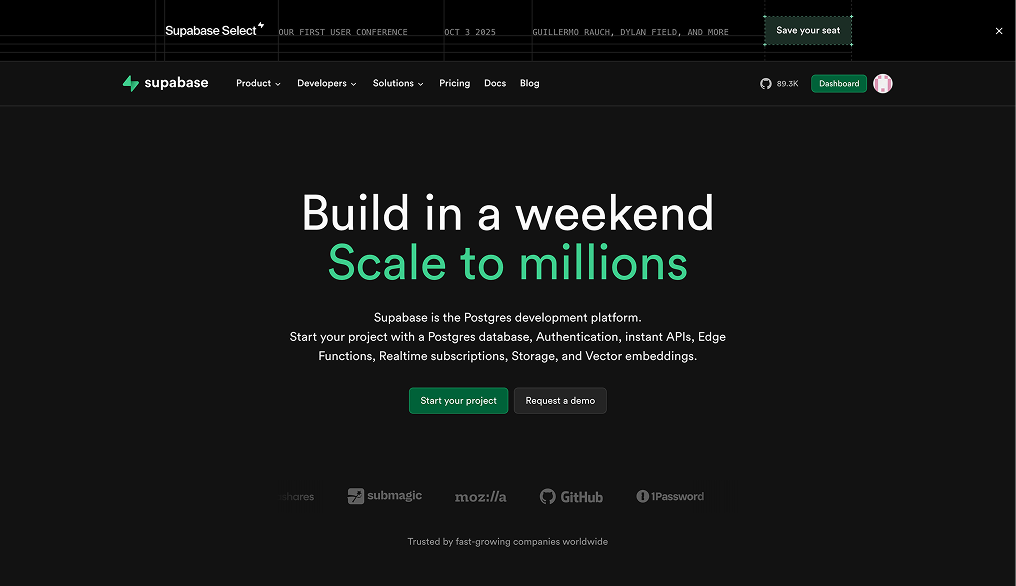Overview of Supabase
Supabase isn’t just a database. It’s an open-source Firebase alternative that gives you a full backend-as-a-service (BaaS) suite built on top of PostgreSQL. Think of it as the ultimate toolkit for building modern applications without having to become a DevOps expert. You get a powerful, scalable Postgres database, user authentication, file storage, auto-generated APIs, and serverless edge functions, all accessible through a clean and intuitive dashboard.
Core Value Proposition
The mission is simple: give developers the power of a relational database with the ease of use of a service like Firebase. While Firebase locks you into a NoSQL, document-based model, Supabase embraces the structure and power of SQL. This means you can build complex, data-intensive applications with the confidence that your data is consistent and your queries are efficient. The ability to self-host provides an escape hatch from vendor lock-in, a critical factor for any serious project.
Strategic Use Cases
Rapid Prototyping & MVPs: Spin up a full backend with a database, auth, and storage in minutes. The generous free tier is more than enough to get your idea off the ground and validate it with real users without spending a dime.
Scalable SaaS Applications: Leverage the power of Postgres and row-level security to build multi-tenant SaaS applications. As you grow, you can scale your database and functions independently, only paying for what you use.
Real-Time Applications: Use Supabase’s real-time capabilities to build collaborative apps, live dashboards, and chat applications. Listen for database changes and push updates to your users instantly.
Critical Success Factors
The Pricing Reality Check:
- Free Tier: Supabase’s free tier is incredibly generous, offering two projects with a 500MB database, 1GB of storage, and 5GB of bandwidth. It’s perfect for development, hobby projects, and low-traffic applications. The only catch is that free projects are paused after one week of inactivity.
- Pro Plan (Starting at $25/mo): This is the workhorse plan for production applications. You get a larger database, more storage and bandwidth, and no project pausing. The pay-as-you-go model means you only pay for what you use beyond the base allocation, which is both powerful and potentially dangerous if you’re not monitoring your usage.
- Team Plan: For larger teams that need advanced features like custom SMTP, SSO, and priority support.
Implementation Requirements:
- Basic SQL Knowledge: You don’t need to be a DBA, but understanding basic SQL queries will unlock the full power of Supabase. The dashboard is great, but the real magic happens when you start writing your own queries.
- Understand Row-Level Security (RLS): This is Supabase’s secret sauce for security. Take the time to learn how to write RLS policies to ensure that users can only access the data they’re supposed to. It’s a bit of a learning curve, but it’s essential for building secure applications.
- Client-Side vs. Server-Side: Know when to use the Supabase client libraries on the front-end and when to use them in serverless functions. Sensitive operations should always be handled on the server-side to protect your database credentials.
